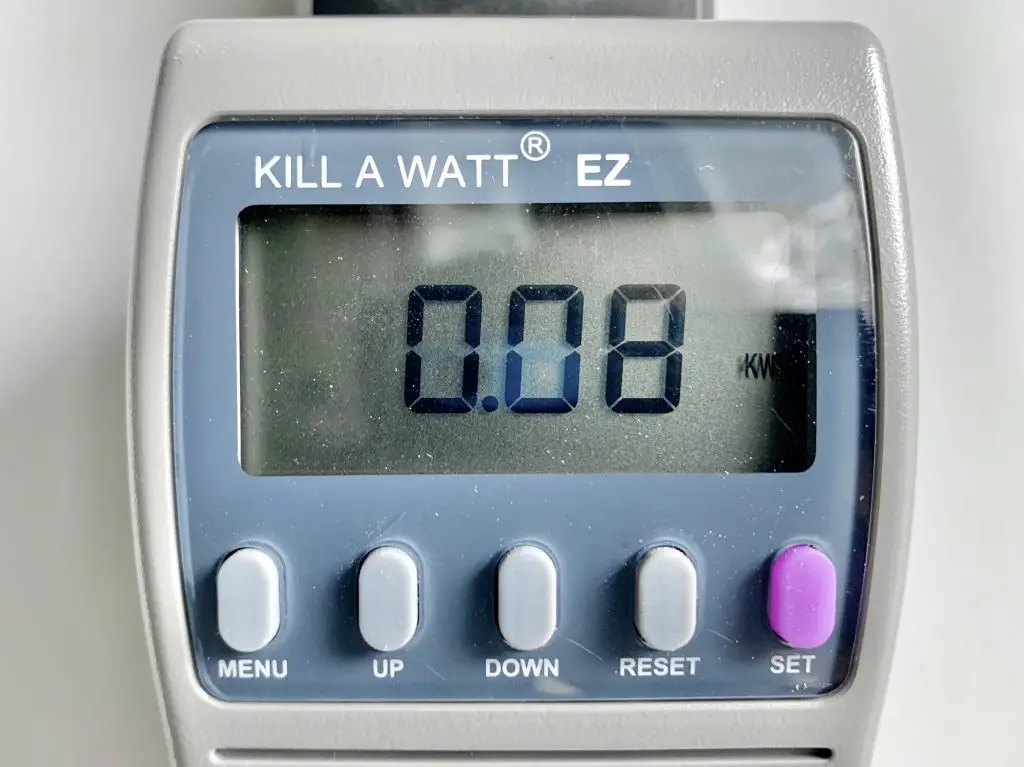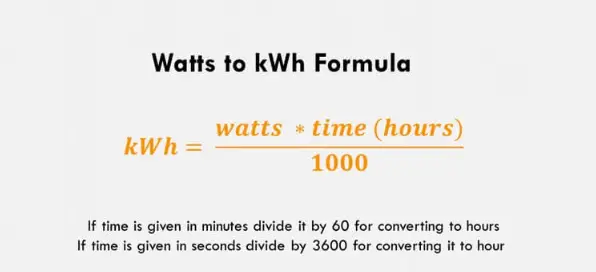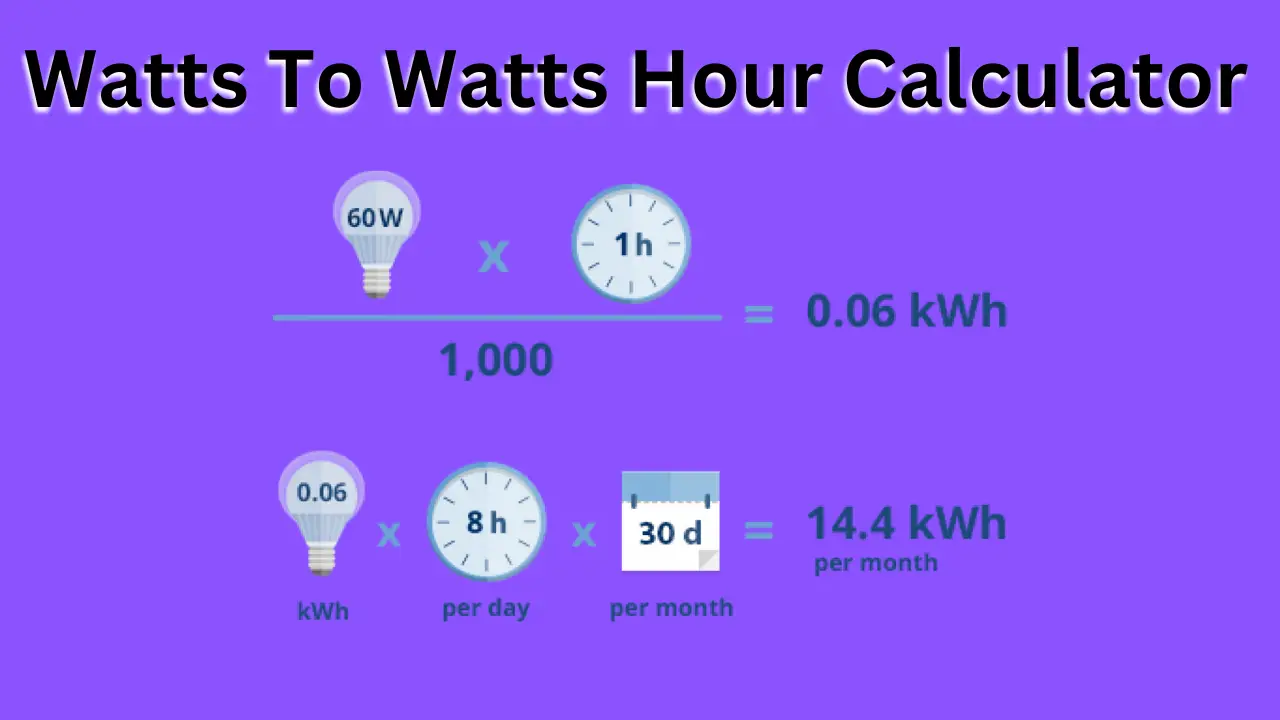Understanding the consumption and utilization of energy in various applications requires the use of electrical measurements. Fundamental units like Watts (W) and Watt Hours (Wh) are crucial for measuring power and energy usage.
This article will help you understand the fundamental ideas of watts and watt-hours and how these units relate to one another, whether you’re a homeowner, an engineer, or just interested in energy usage. We’ll look at how these units differ from one another and discuss why it’s important to convert between them.
What Are Watt Hours?
A watt-hour is just the amount of energy expended by 1 watt during the period of 1 hour. You can learn how much electricity different devices are using by using watt-hours.
Wattage is actually very strongly related to how much energy certain appliances use, despite the fact that it may appear to be a random quantity. To determine exactly how much you are consuming, utilize the watt-hour calculation formula.
If you’re aiming to consume less energy, this is really helpful. It might also aid in determining how much electricity a solar panel is capable of producing.
Formula: watt hours = watts × hours
Wh = W × hrs
Why Calculate Watt Hours?
You can determine how much electricity your gadgets and appliances use by calculating watt-hours. This knowledge is helpful when attempting to consume less electricity and lower your monthly power bill.
Once you know which appliances consume the most energy, you can decide whether to use them less frequently or swap them out for more energy-efficient models.
If you see that a few of your lights still use incandescent light bulbs, for instance, you can swap them out for LED bulbs, which consume at least 75% less energy.
Additionally, if you wish to utilize a battery or solar generator to power equipment, such as when camping, adding up the total number of watt-hours used by all of your devices is crucial in determining the battery size to purchase.

What Is a Watt?
In the International System of Units (SI), a watt represents a unit of power. It bears the name of Scottish engineer James Watt, who made a vital contribution to the steam engine’s development. One joule of energy transported or converted every second is called one watt. It has the following mathematical expression:
Watts equals joules per second
The watt is the common unit for measuring power, which is the rate at which energy is used, transported, or converted. For instance, if a gadget utilizes or transfers 100 joules of energy every second, it consumes 100 watts of power. In many applications, including home electronics, industrial machinery, and domestic appliances, watts are frequently used to quantify electrical power.
Converting Watts to Watt Hours (W to Wh)
To convert watts to watt-hours – Multiplying watts by hours will provide watt-hours.
Formula: watt-hours = watts × hours
Wh = W × hrs
Example
Consider using a computer monitor that is 75 watts continuously for 5 hours daily. To determine the total energy consumed by the monitor during this period, you can use the watts-to-watt-hours conversion:
watt-hours = watts × hours
75 W × 5 hrs = 375 Wh
Therefore, the computer monitor consumes 375 watt-hours of energy each day. Understanding these calculations allows you to gauge the energy usage of your devices accurately and make informed decisions about energy conservation and efficiency.
Converting Watt Hours to Watts
Need to convert in the other direction? Divide the number of watt-hours by the number of hours to get watts.
Formula: watts = watt hours ÷ hours
W = Wh ÷ hrs
Example
Imagine you have a solar-powered light installed in your backyard. You want to determine how much energy it consumes during the night to ensure your solar panel system is appropriately sized to meet its needs.
You decide to monitor the light’s energy consumption for a full night, which lasts 10 hours. After observing the light’s usage, your energy monitor indicates a total consumption of 600 watt-hours (Wh).
To calculate the average power consumption of the solar light during the night, use the formula:
Average power = Total Energy Consumption ÷ Total Time
Average Power = 600 Wh ÷ 10 hrs = 60 W
Thus, in this example, your solar-powered light has an average power consumption of 60 watts during the 10-hour night period.
How to Determine an Appliance’s Watt Hours
I’ll go over two methods for calculating an appliance’s wattage:
- Using the appliance’s specifications, calculate the watt hours.
- Utilize an electrical usage monitor to obtain actual watt-hours.
Let’s go over each approach in detail.
1. Using the appliance’s specifications, calculate the watt hours
For effective power management and informed energy conservation decisions, you must be aware of how much energy your home appliances use.
On the appliance label or in the user manual, you may typically find information regarding energy consumption, expressed in watts (W) or amps (A).
You must convert an appliance’s amp rating to watts using the formula Watts (W) = Amps (A) x Volts (V) in order to determine the appliance’s energy consumption. For other countries, check the standard outlet voltage; the voltage in the US and Canada is typically 120 volts.

Consider, for example, an electric kettle whose label indicates that it consumes 1200 watts (W) of power. Since it already supplies the consumption in watts, additional conversion in this instance is not necessary.
Let’s look at a blender whose energy consumption is listed on the label as 12 amps (A). We determine the blender’s energy consumption in watts as follows as its voltage is also 120 volts:
Watts (W) = Amps (A) x Volts (V)
12 A × 120 V = 1440 W.
You may determine how many hours you use the item each day by finding its energy usage in watts. If the usage time is given in minutes, divide that number by 60 to get the equivalent in hours.
Let’s say, for example, that you use the electric kettle every day for about 6 minutes. You would divide this by 60 to get hours using the formula:
6 min / 60 = 0.1 hrs.
Next, multiply the appliance’s wattage consumption by the anticipated usage hours to determine the watt hours:
Watt Hours (Wh)= Watts (W) * Hours (h)
In the case of the electric kettle, 1200 W multiplied by 0.1 hours equals 120 Wh. This means that your electric kettle’s projected daily energy consumption is 120 watt-hours.
By taking these actions, you can learn important information about how much energy your appliances use, which will guide your decision-making and help you better control your electricity usage.
2. Utilize an electrical usage monitor to obtain actual watt-hours
You may measure how much electricity an appliance uses with the help of an efficient gadget called an electricity usage monitor.
Here’s how to utilize it successfully step-by-step:
- Connect the Monitor: The electricity usage meter should first be plugged into a wall outlet. After that, attach your device to the monitor. Ensure the monitor’s current limit is less than the appliance’s maximum current in amps. For instance, I connected my electric kettle to a monitor named “Kill A Watt” and utilized it.
- Set Up the Monitor: If necessary, configure the monitor according to the guidelines in the user manual.
- Record Electricity Usage: Let the monitor record the appliance’s electricity usage. How long you wait for the readings is entirely up to you. After making my morning coffee, I checked the monitor for my kettle, which I use once daily.
- Look over the readings: When you’re prepared, look at the display to see how much power the appliance consumes. The total energy used will be shown in watt hours (Wh) or kilowatt hours (kWh). In my situation, after using the kettle, the monitor showed 0.06 kWh.
- Easily convert kWh to Wh if necessary: If your monitor gives measurements in kWh, but you prefer watt hours (Wh), you can do it with ease. Just multiply the kWh by 1000.
I calculated the following for my kettle:
0.06 kWh × 1000 = 60 Wh.
As a result, my kettle uses about 60 watt hours daily.
Converting Watts to Kilowatt Hours (W to kWh)

The term “watt hours” won’t appear on your electricity bill. As an alternative, your energy usage will be displayed in kWh. Similar to how 1 kilometer is equivalent to 1000 meters, 1 kilowatt-hour is equal to 1000 watt-hours.
Kilowatt-hours (kWh) can be calculated by converting watts to kilowatts by dividing watts by 1000. Then multiply hours by kilowatts.
Formula: kilowatt-hours = (watts ÷ 1000) × hours
kWh = (W ÷ 1000) × hrs
Example
Imagine you have a laptop that you regularly use for work or entertainment. The laptop’s power adapter indicates that it operates at 65 watts.
To determine the energy consumption in watt-hours (Wh) over a specified period, let’s calculate how much energy it consumes in a typical 8-hour workday:
(65 W ÷ 1000) × 8 hrs= 0.52 kWh
So, in this example, your laptop consumes 0.52 kilowatt-hours of electricity during an 8-hour workday.
The Calculator
This calculator will make all these calculations easier to you:
Conclusion
In conclusion, the Watts to Watt Hours Conversion Calculator is a helpful tool for performing rapid and precise conversions between watts (W) and watt hours (Wh). Anyone working with electrical appliances, energy consumption, or power generation has to understand the differences between these units.





